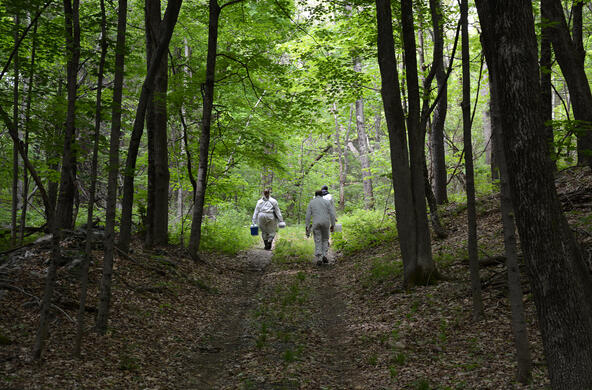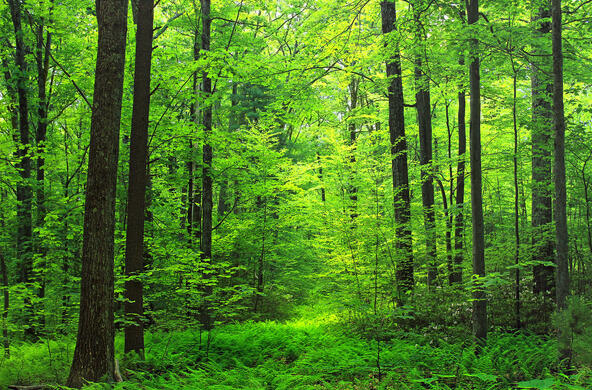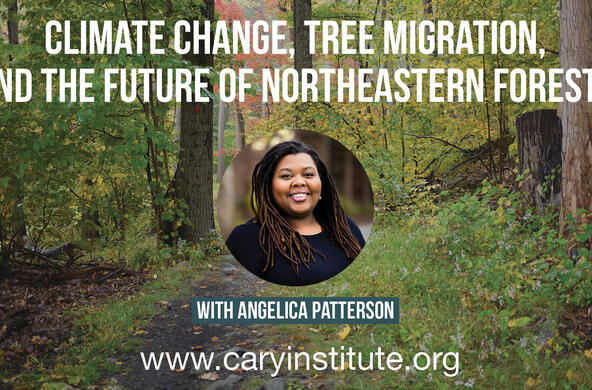While walking through the woods in the Hudson Valley, it is common to stumble upon the remnants of stone walls. Now mossy and overgrown, they date back to a time when agriculture dominated the landscape. In those days, the Hudson Valley was a patchwork of farms and only the steepest of slopes and the rockiest of areas remained forested. Now, more than a century later, the forest has returned, and 56 percent of Dutchess County is once again wooded.
But the forests of today are quite different from the sparse woods of the late 19th century, let alone the primordial expanses Henry Hudson encountered when he first sailed up the Hudson River.
Forest change can arise from internal processes, such as the natural succession of trees as a forest ages, and external factors, such as exotic diseases and climate change. Both of these processes, in turn, can be influenced by human activities. Because most trees are long-lived, studying these interactions is difficult. An absence of long-term data compounds the problem. After all, not many people take the time to count the trees in a forest, much less every tiny seedling, sapling and shrub.
Luckily, in 1984, founding members of the Cary Institute of Ecosystem Studies conducted a meticulous survey of the forest on the institute's 2,000-acre campus. Since that time, the forest has not been harvested or developed. This provided a unique opportunity to relocate the original survey plots, remeasure them and calculate how the forest has changed over the years.
Several shifts noticed
Our measurements have identified a number of shifts in the composition of the institute's forest. Most pronounced were increases in red oak and sugar maple, declines in chestnut oak, and severe declines in flowering dogwood. Each shift is the end result of a complicated history, which can be tied to particular events that unfolded in the forest.
For instance, in the early 1980s gypsy moth outbreaks led to massive defoliations that triggered mortality of chestnut oak, while being less destructive to its cousin, the red oak. Likewise, our data show that flowering dogwood, a beautiful understory tree, has suffered extensive population declines because of the fungal disease known as dogwood anthracnose. An increase in sugar maple and a decrease in red maple may be largely because of natural forest succession, as sugar maple is better adapted to the shady conditions common in mature forests.
These changes are important because the rise or fall of even a single tree species can have profound consequences for the entire forest ecosystem. For example, the increasingly common red oak produces acorns that last throughout the winter season, providing a steady source of nourishment for animals like the white-footed mouse. The white-footed mouse, in turn, plays a crucial role in the dynamics of Lyme disease. When mouse population density increases, Lyme disease incidence also tends to increase.
As our forests face an arsenal of threats from climate change, air pollution, imported pests and invasive plant species, this type of big-picture thinking is becoming more and more critical. Simply put, we can't manage what we don't understand.
For this reason, the continued monitoring of forests and other natural resources is absolutely essential, and should be supported not only by those of us who hike, hunt, own land, or just love New York maple syrup, but also by everyone who cares about the future of the Hudson River Valley.







